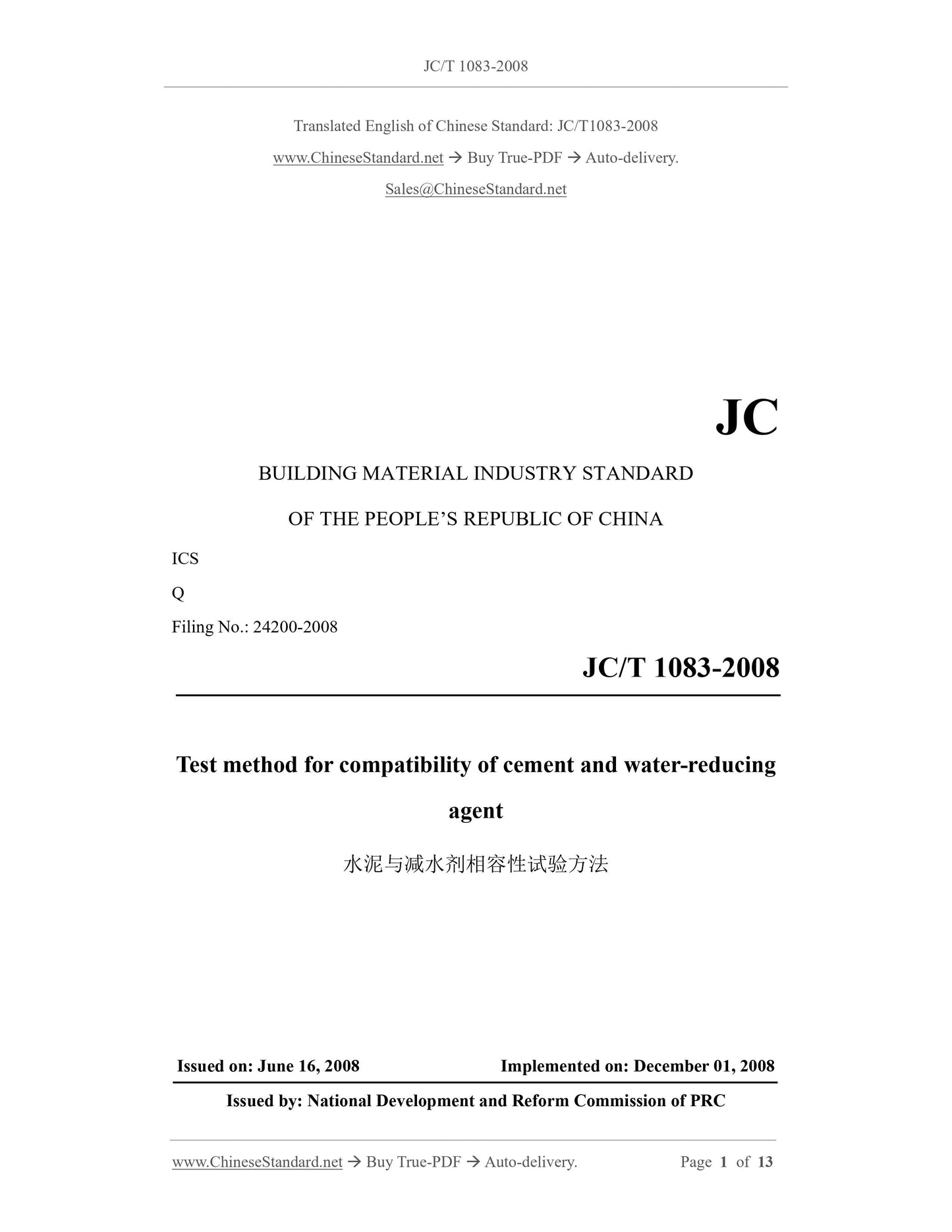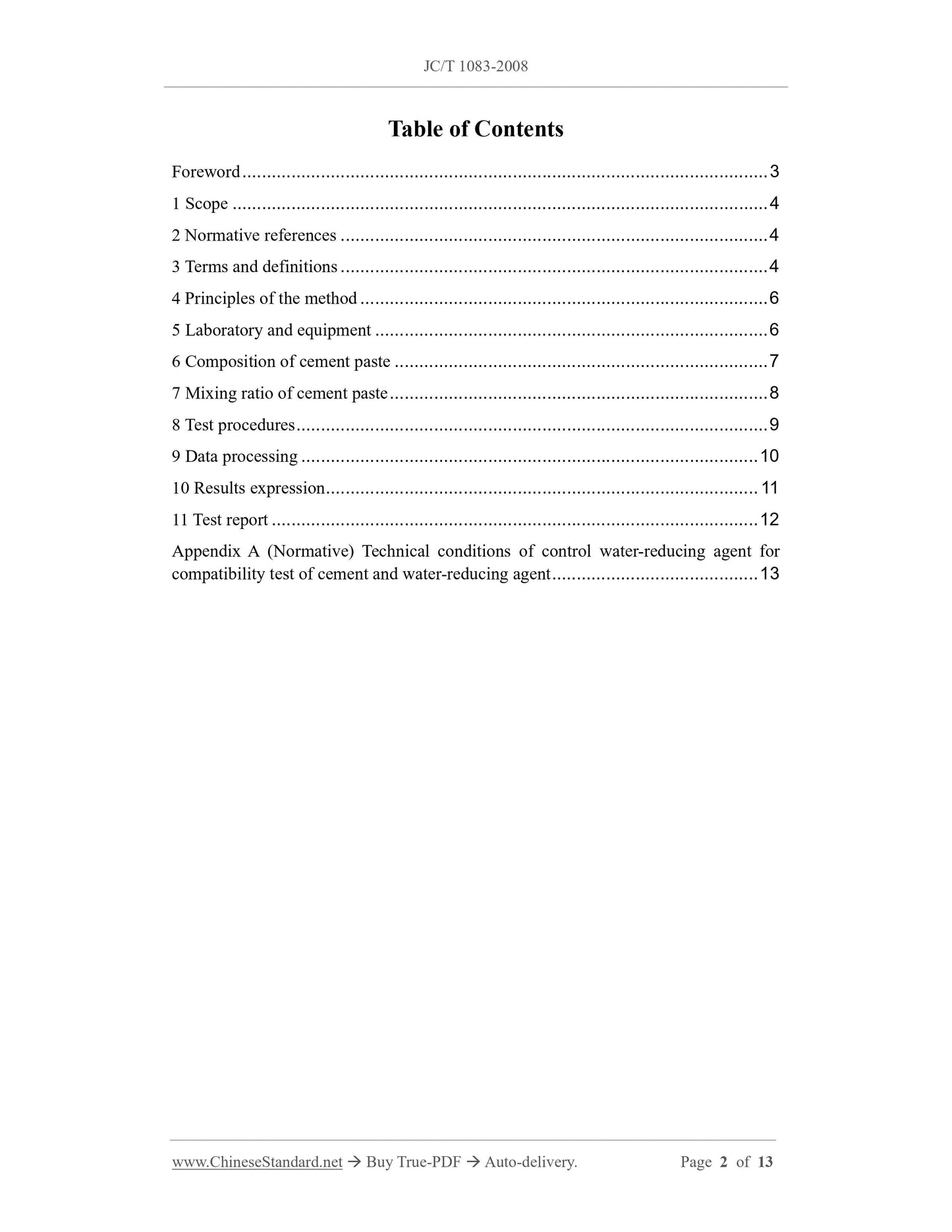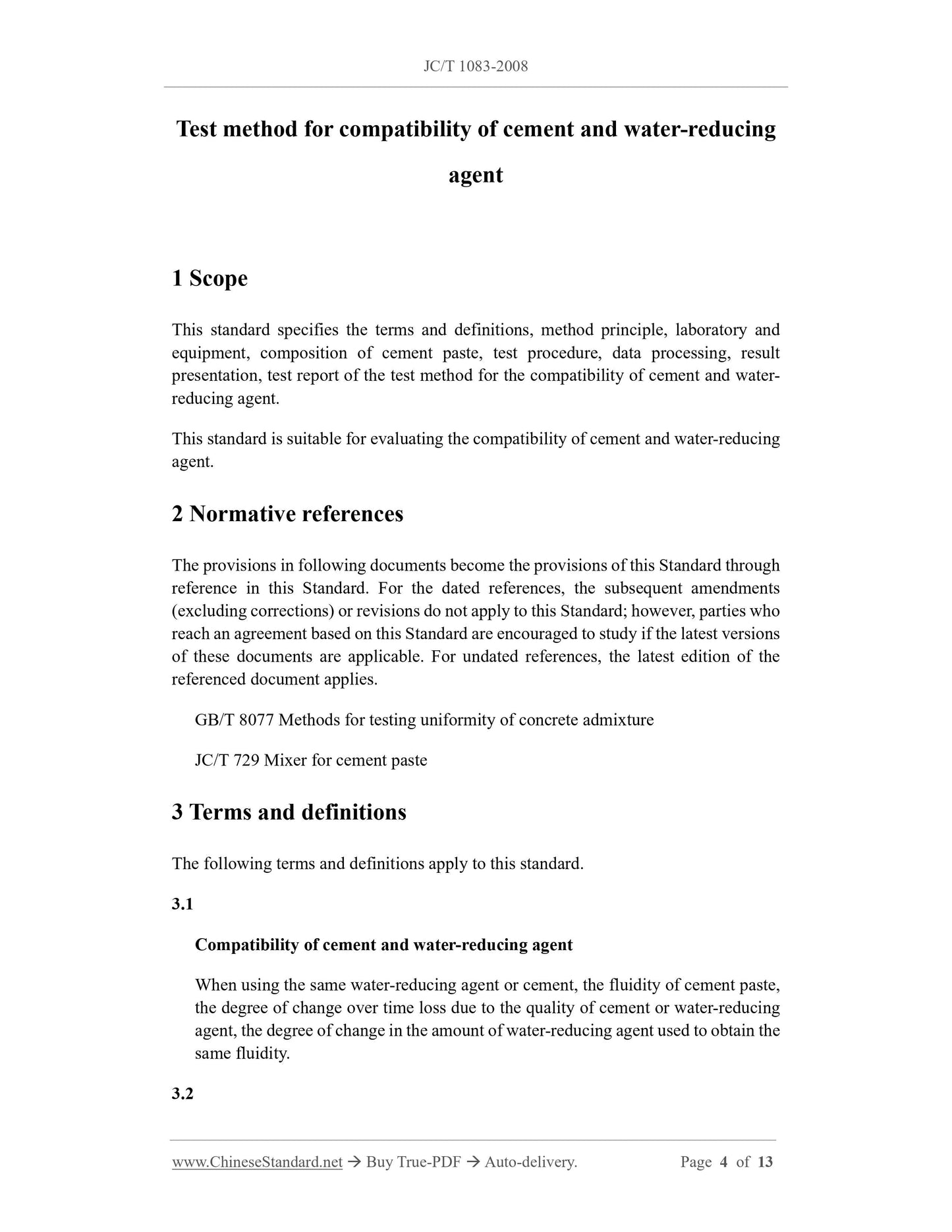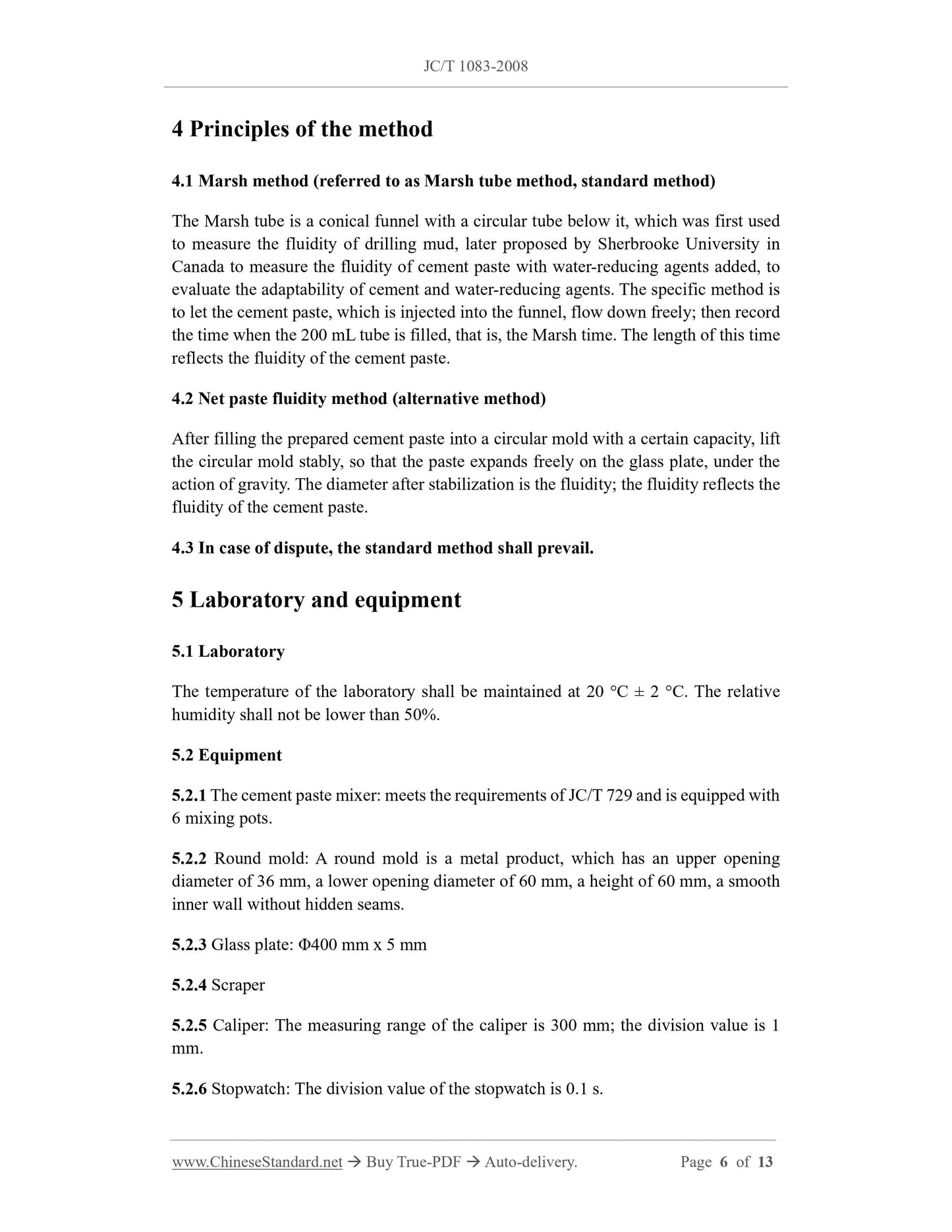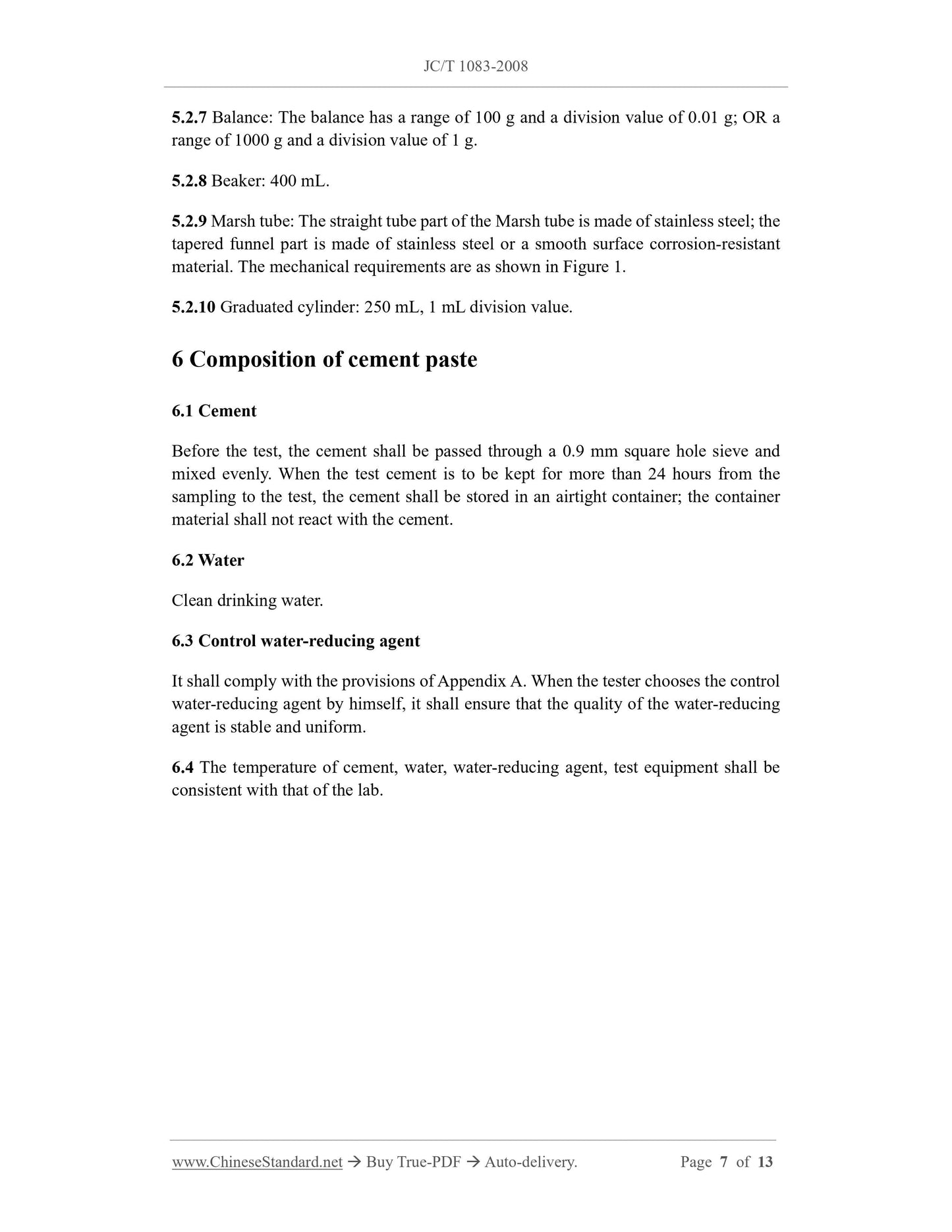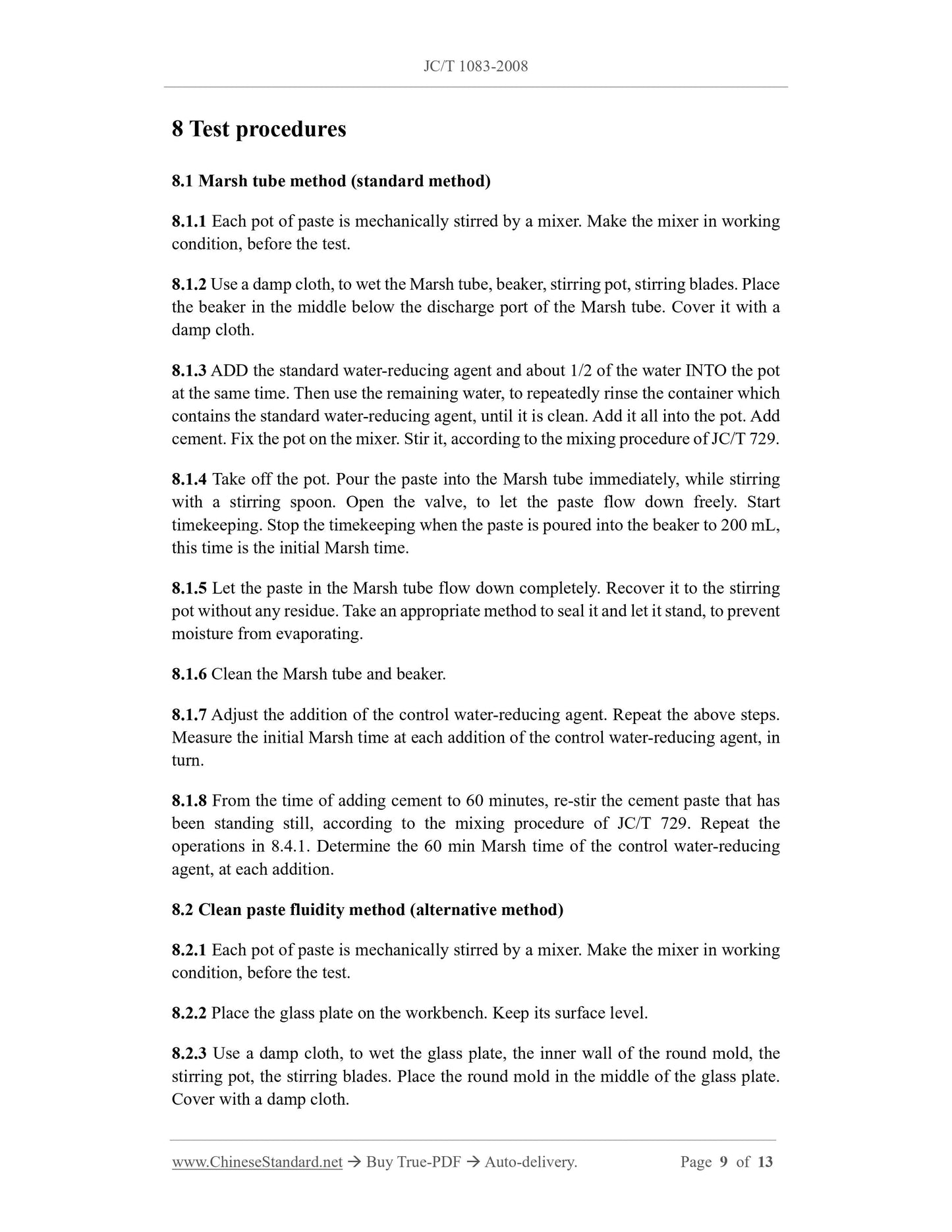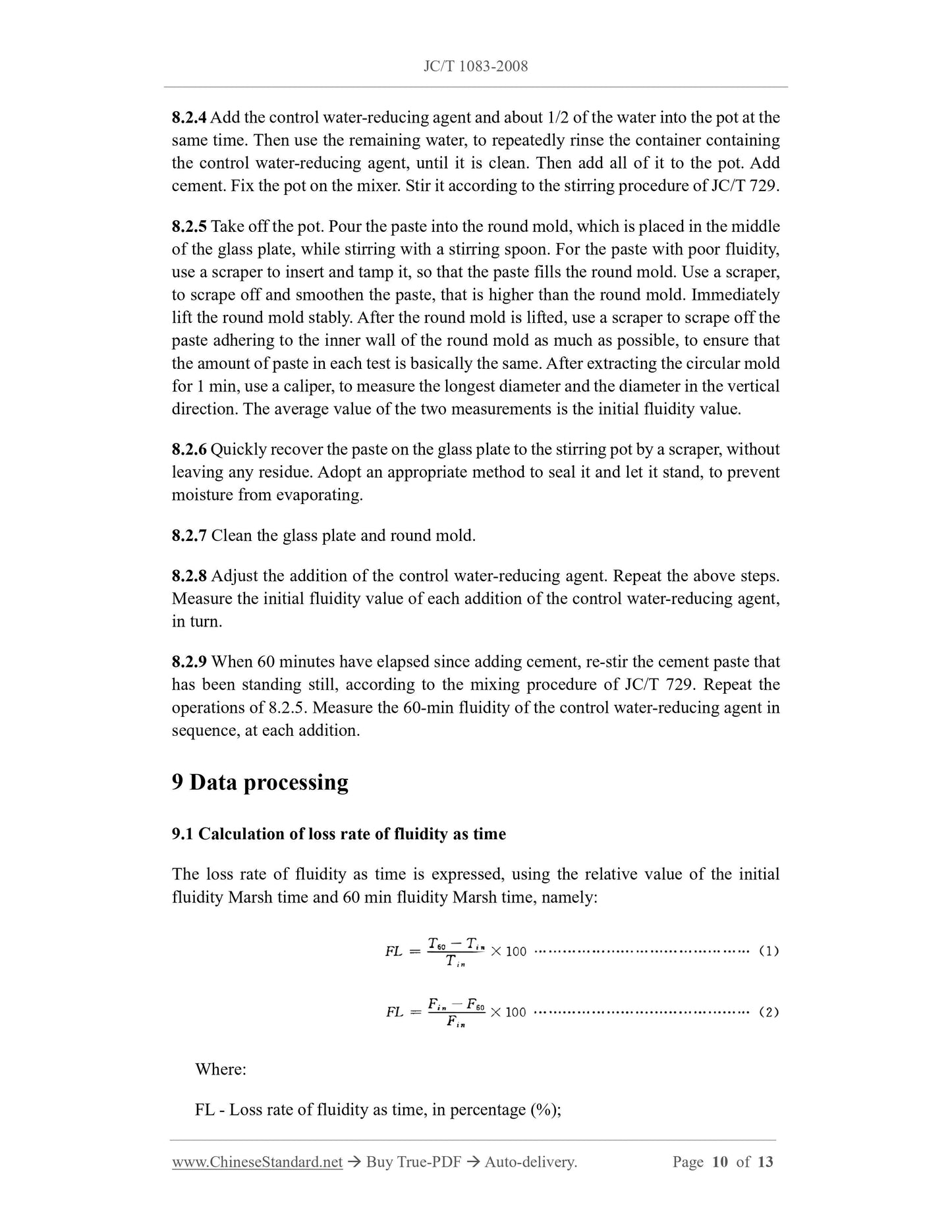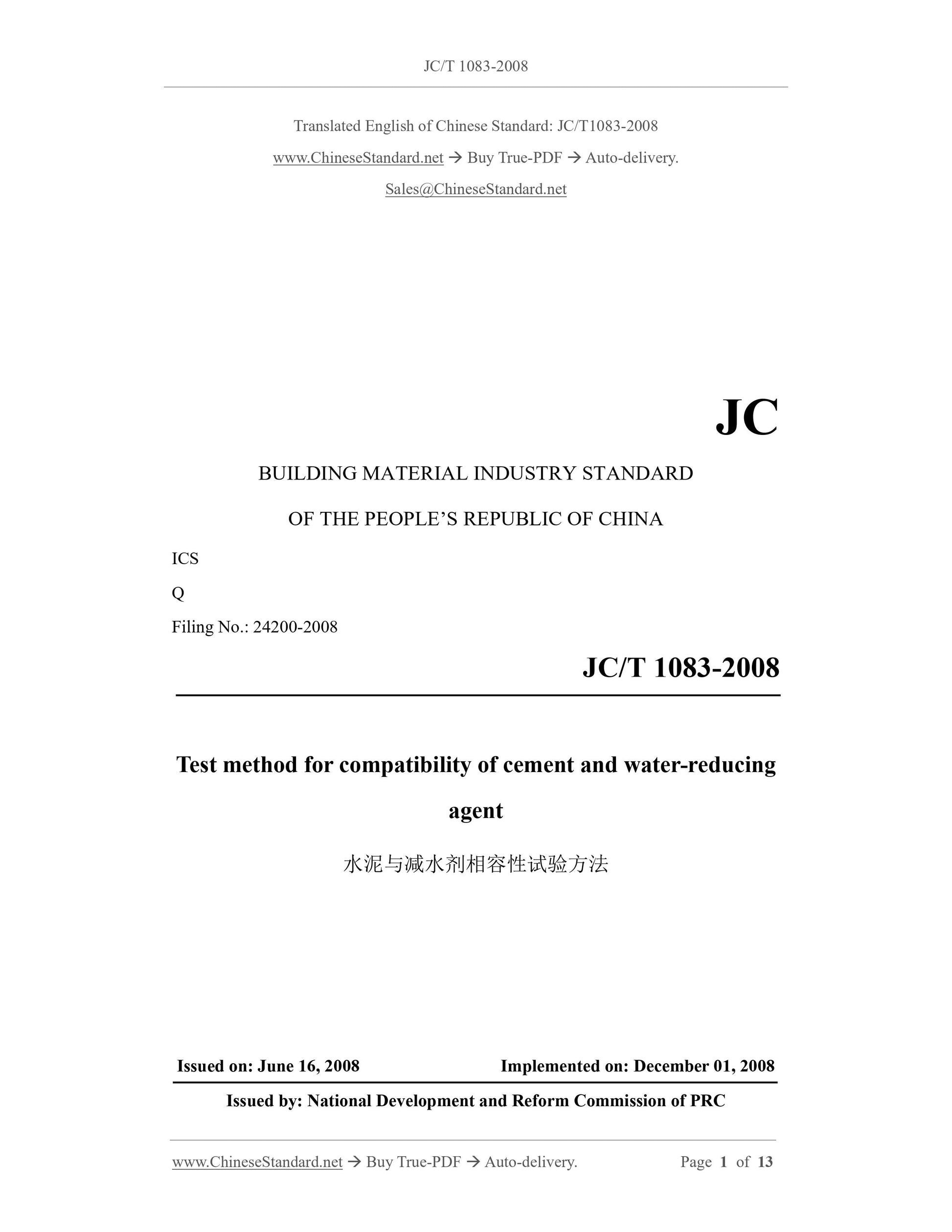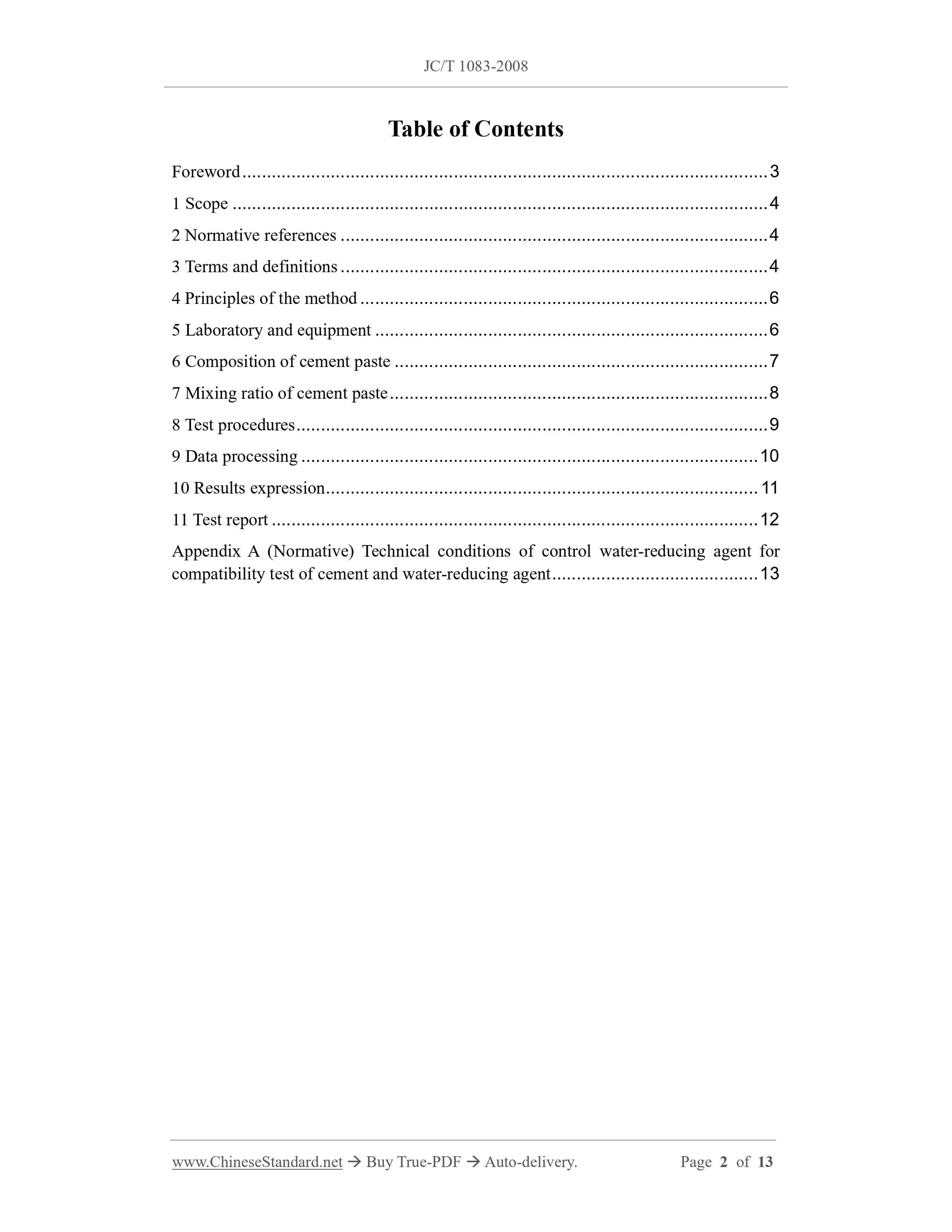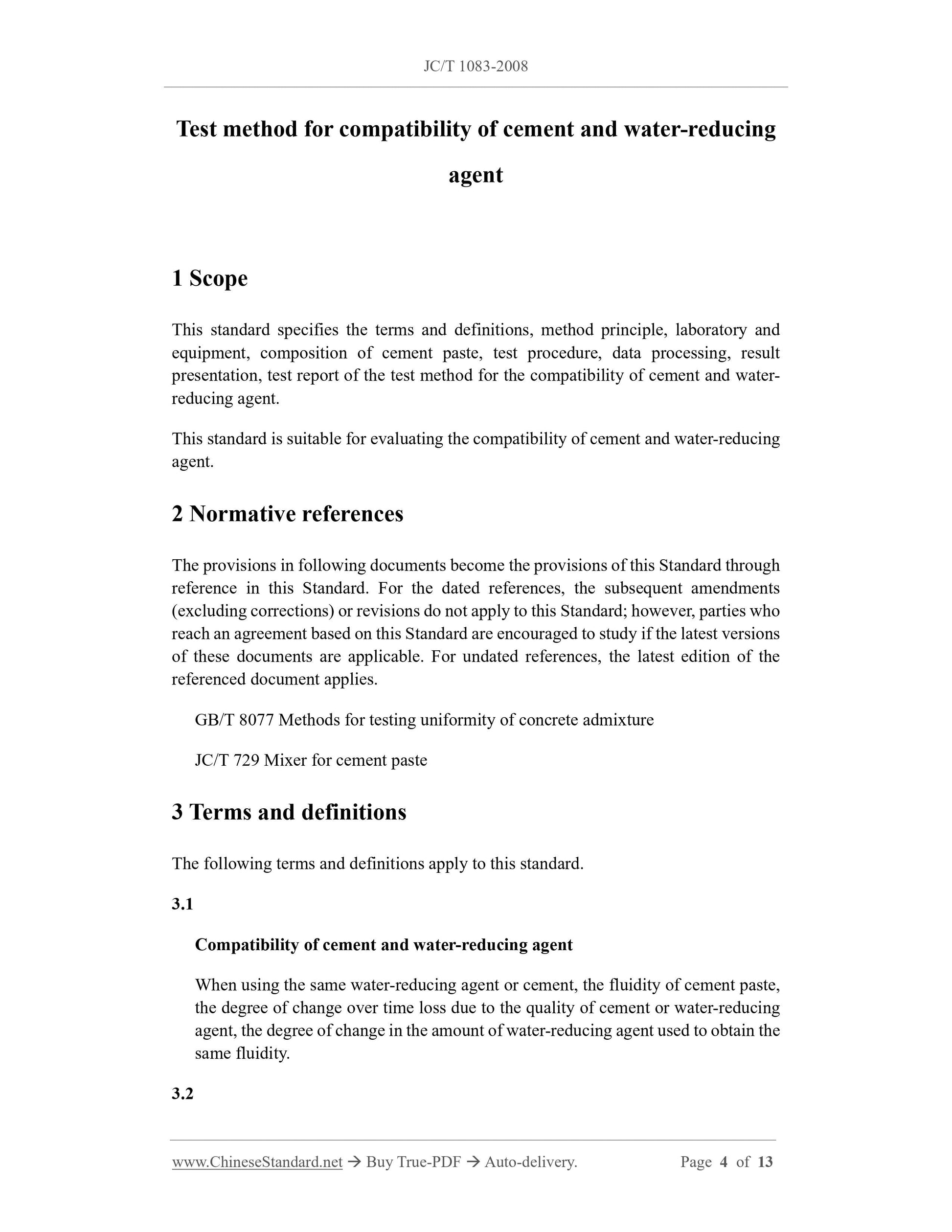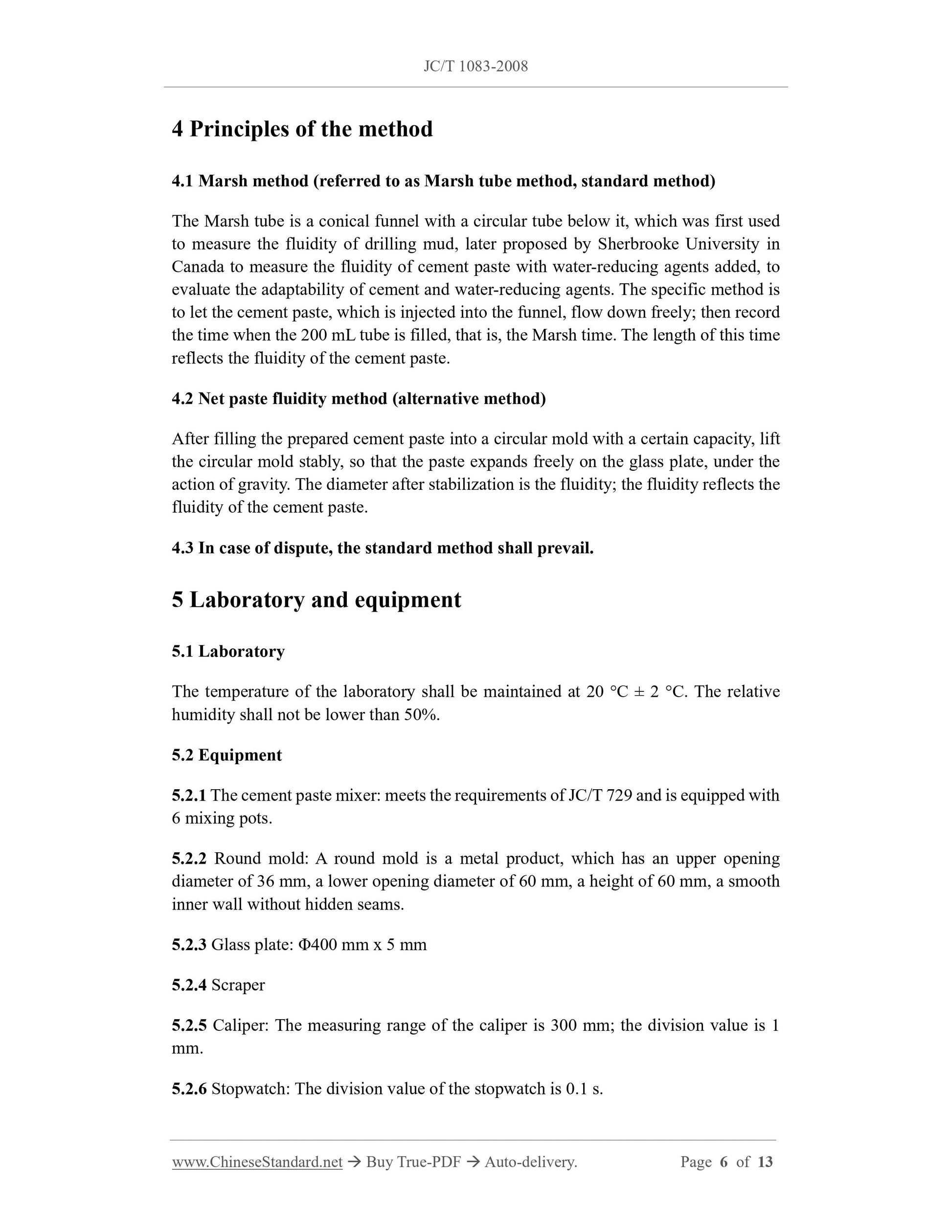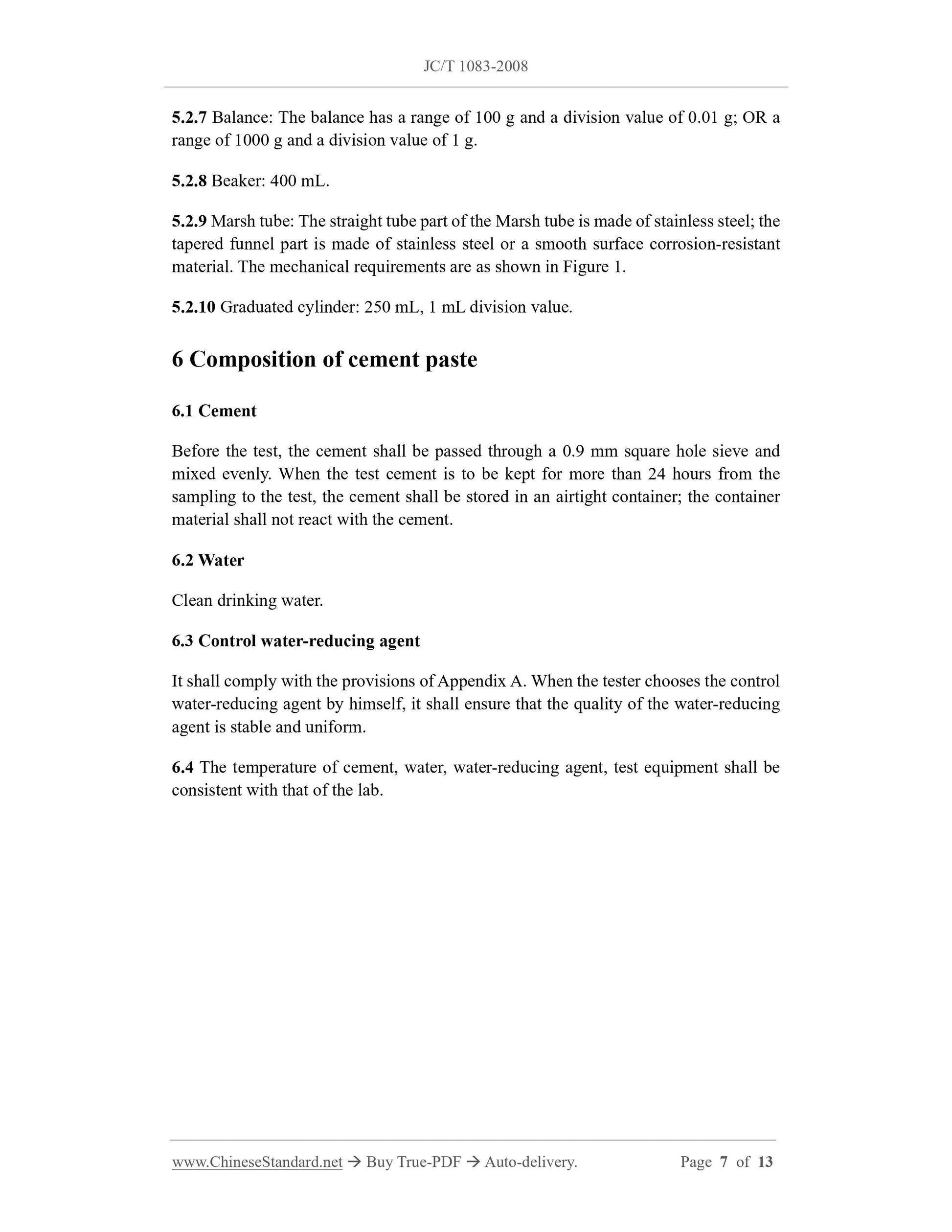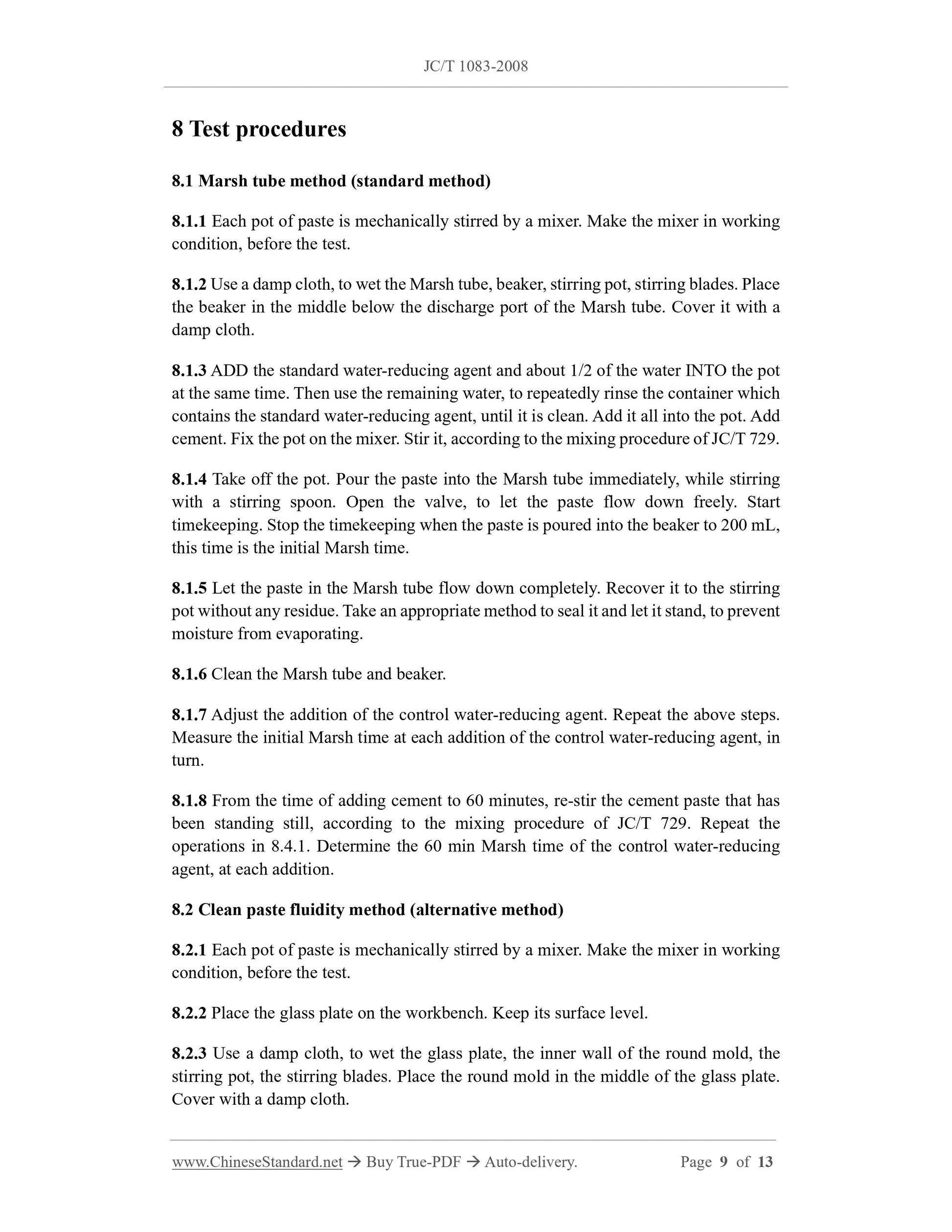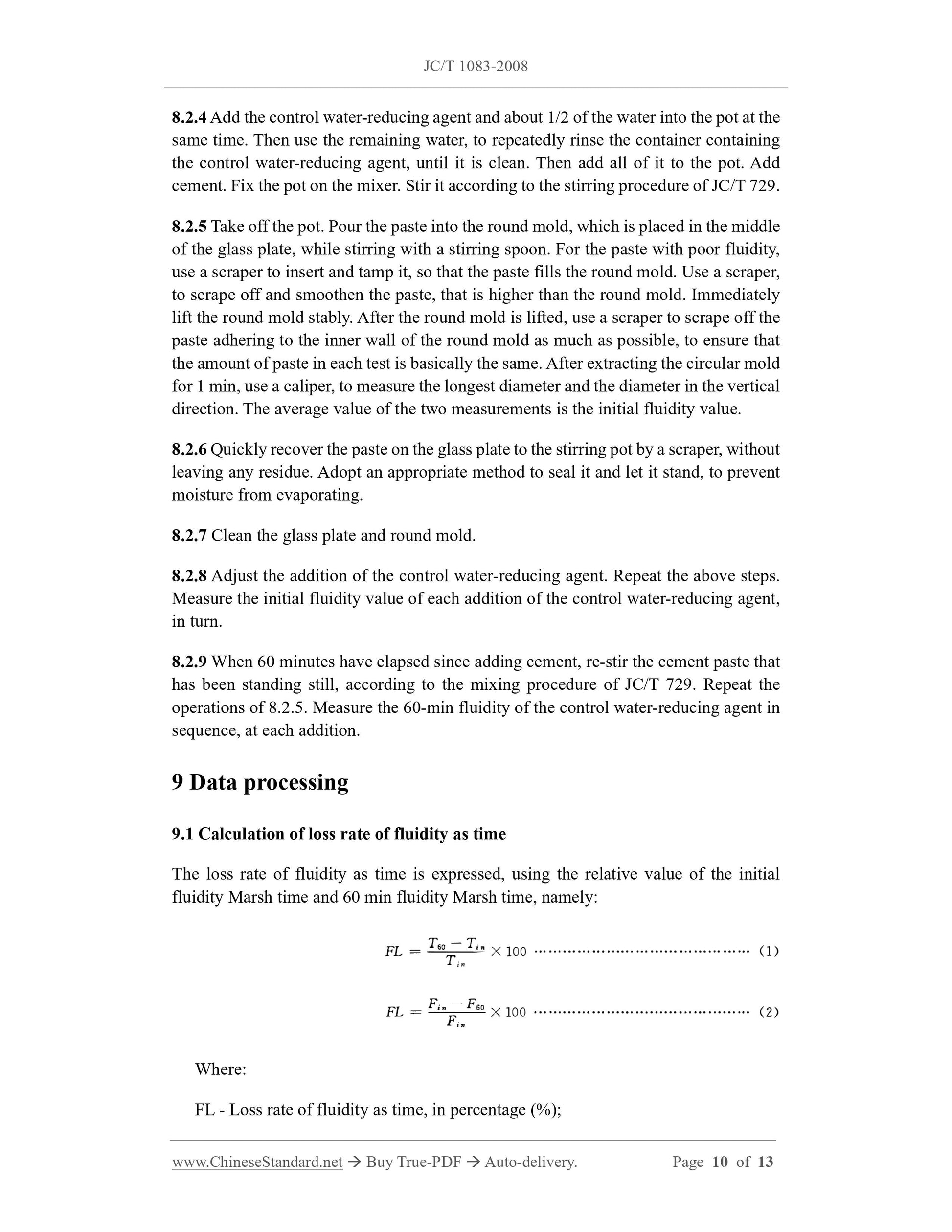1
/
of
7
www.ChineseStandard.us -- Field Test Asia Pte. Ltd.
JC/T 1083-2008 English PDF (JC/T1083-2008)
JC/T 1083-2008 English PDF (JC/T1083-2008)
Regular price
$130.00
Regular price
Sale price
$130.00
Unit price
/
per
Shipping calculated at checkout.
Couldn't load pickup availability
JC/T 1083-2008: Test method for compatibility of cement and water-reducing agent
Delivery: 9 seconds. Download (and Email) true-PDF + Invoice.Get Quotation: Click JC/T 1083-2008 (Self-service in 1-minute)
Newer / historical versions: JC/T 1083-2008
Preview True-PDF
Scope
This standard specifies the terms and definitions, method principle, laboratory andequipment, composition of cement paste, test procedure, data processing, result
presentation, test report of the test method for the compatibility of cement and water-
reducing agent.
This standard is suitable for evaluating the compatibility of cement and water-reducing
agent.
Basic Data
| Standard ID | JC/T 1083-2008 (JC/T1083-2008) |
| Description (Translated English) | Methods for chemical analysis of China ISO standard sand |
| Sector / Industry | Building Materials Industry Standard (Recommended) |
| Classification of Chinese Standard | Q13 |
| Classification of International Standard | 91.100.10 |
| Word Count Estimation | 13,164 |
| Date of Issue | 2008-06-16 |
| Date of Implementation | 2008-12-01 |
| Quoted Standard | GB/T 8077; JC/T 729 |
| Regulation (derived from) | ?Development and Reform Commission Announcement 2008 No.44; |
| Issuing agency(ies) | Ministry of Industry and Information Technology |
| Summary | This standard specifies the terms and definitions of cement and water reducer compatibility test methods, principle of the method, laboratories and equipment, cement slurry composition, test procedure, data processing, Results are expressed, test report. This standard applies to evaluate the compatibility of cement and water reducer. |
Share
